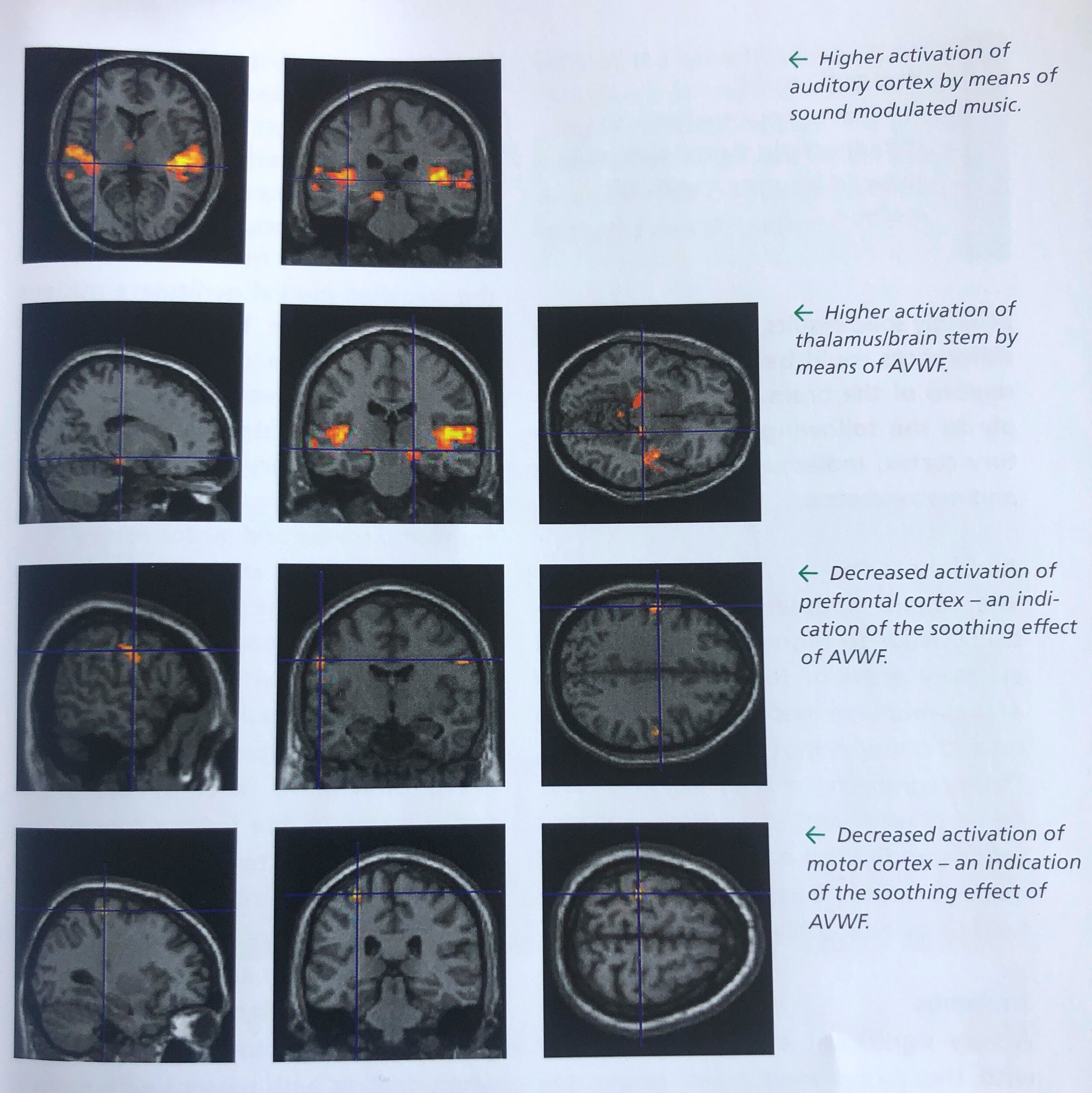Science
fMRI Test
Using funtional magnetic resonance imaging (fMRI) it is now possible to comprehensively understand and analyse changes in the metabolism of neural mechanisms of action of certain audio-visual stimuli. The objective of this research is to make transparent and to present subconscious thought processes.
The basic principle is based on phenomena in the magnetic field. If a region of the brain is working strongly, it consumes energy and therefore with the help of the blood, fresh oxygen must be transported into these regions. This change is measured. This signal is called BOLD effect (blood-oxygen-level-dependent). This contrast is dependent on the oxygen content of the red blood cells.
Red blood cells which have released their oxygen, act like small iron molecules or smal magnets which interfere with the magnetic field.
In 2011 a study was conducted by Limbio Business OG at the Christian-Doppler-Klinik Salzburg with fMRI. 13 individuasls (7 men and 6 women) aged from 15 to 61 were tested. In the course of the AVWF-test, neuronal action mechanisms of sound modulated music were tested and analysed. These results clearly demonstrate what differences in the individual regions of the brain reveal recognizable neural changes.
Ten music pieces with a length of 30 seconds each were applied. Every piece of music was played once, sound modulated and not modulated, at random. The analyse of fMRI signals showed surprisingly solid results. In total, significant differences could be measured in three regions of the brain. These findings apply to the following brain areas: auditory cortex, thalamus, prefrontal cortex and motor cortex.
Video in German
Auditory Cortex
The sound modulated music demonstrably leads to higher neural activity in auditory areas of the brain. These are areas which are responsible for reception and precessin of sound information. These regions in the temporal lobe - also called primary auditory cortex - process sound modulated music in a different manner. It could be proved that these effects occur bilaterally.
Thalamus
A very significant and altered activity with the sound modulated music was found in areas of the thalamus (brain stem) and also possibly intensified in regions which are relavant for auditory processing. These effects occur even bilaterally, i.e. the sound modulated music enhances this effect. Furthermore, there is evidence that here an activation of the so-called medial geniculate nucleus (MGN) takes place. This acoustical core transfers excitation in the primary auditory cortex. However, this result is not quite robust or significant as the findings of the auditory cortex.
Prefrontal cortex and motor cortex
Contrary findings arise in specific motoric regions of the brain. For the first time, the sound modulated music triggers a lower activity in these regions than the not-motulated music sound. The prefrontal cortex is responsible for the motion plan whereby the motor cortex is responsible for the control thereof. The neural activity measured in the prefrontal cortex and in the motor cortex is diminished with sound modulated music. This leads to an increased motoric rest and easing tension.
These findings may be of importance when dealing with persons with motoric unrest. For instance with education and treatment of children with challenging dispositions. It could have an effect in soothing and calming hyperactive children, who can hardly be influenced by requests or reprimands. All in all, the results of the objective brain scans of the fMRII are a strong indication for this assumption. The increased use of psychostimulants, which are often prescribed as a last resort, coul be diminished by using the AVWF method.
Cortisol, the stress hormone
Our brain consumes about 80 precent of the available energy reserves. The brain supplies itself with energy by inducing the release of cortisol from the adrenal cortex. Cortisol is endogenous hromone which is of vital importance for stress regulation. It mobilizes the energy provider glucose which is the “fuel” made available for muscles, organs and the brain.
A human being doesn’t need energy around the clock, but then when it is needed, therefor there is a distribution of cortisol in day and night-time cycles. The maximum distribution under conditions of repose can be found in the first hour after waking up, when we need “to get going”. This called the “cortisol awakening response (CAR)”.
AVWF normalizes the cortisol regulation
There were expected and surprising results. The patients who showed an increased CAR were significantly normalized in their cortisol regulation after the AVWF treatment. They felt they were definitely more able to cope with stressful situations. The patients reported that they felt more relaxed and were able to sleep better. This was positive and much as we had expected (Fig.2).
What was surprising- and found only in this form in the patients treated with AVWF: even those who had a reduced or missing CAR, i.e. too little cortisol in the blood, benefited from the sound modulated music: their cortisol levels rose and the cortisol regulation showed a trend towards normalization. This was also linked with the personal experience of the patients who said that they felt considerably fitter and more alert (Fig. 1)
AVWF supports humans in reaching an appropriate, well functioning regulation of the stress hormone cortisol, thereby promoting the functional capacity of HPA “stress axis”, which is a blessing.



